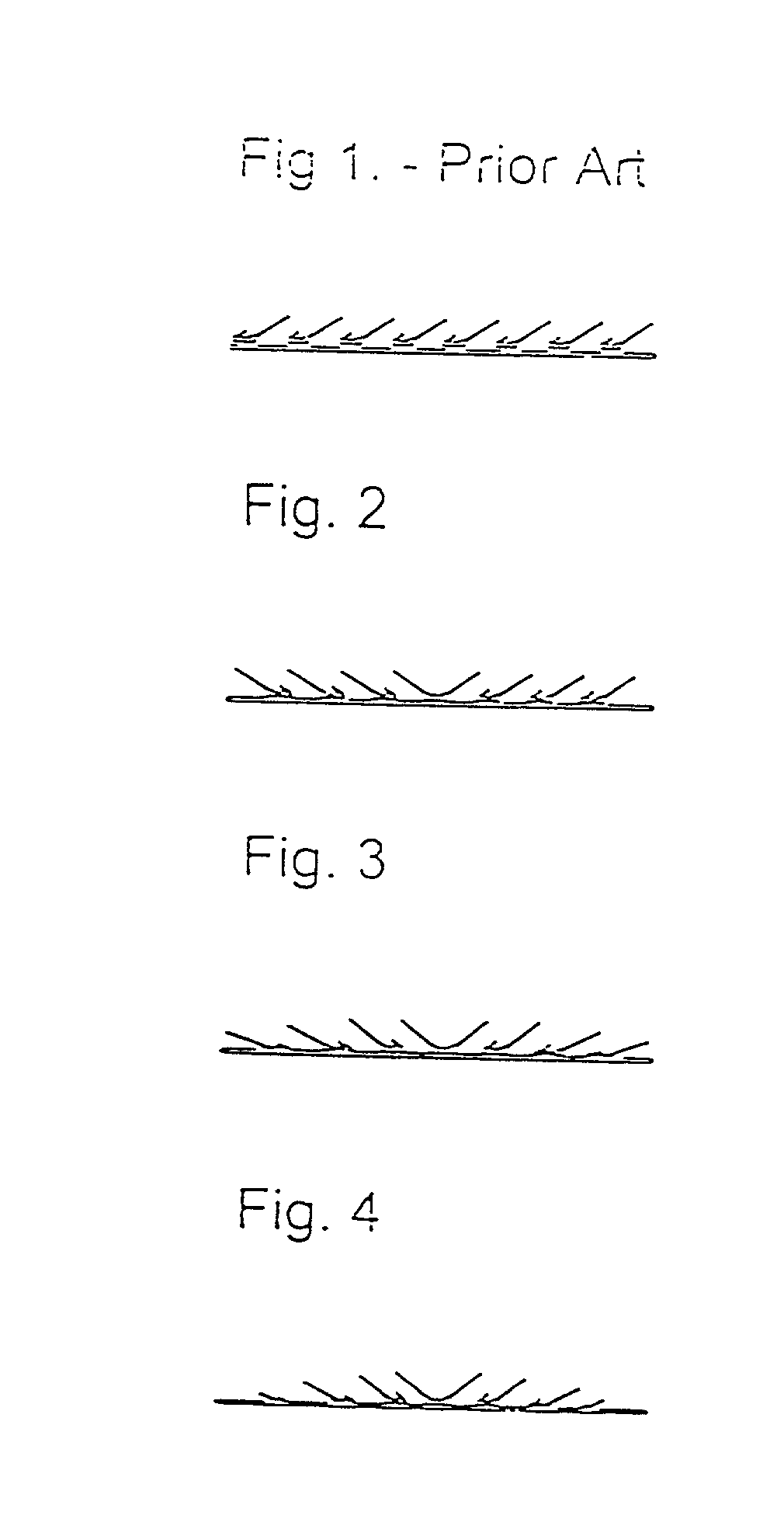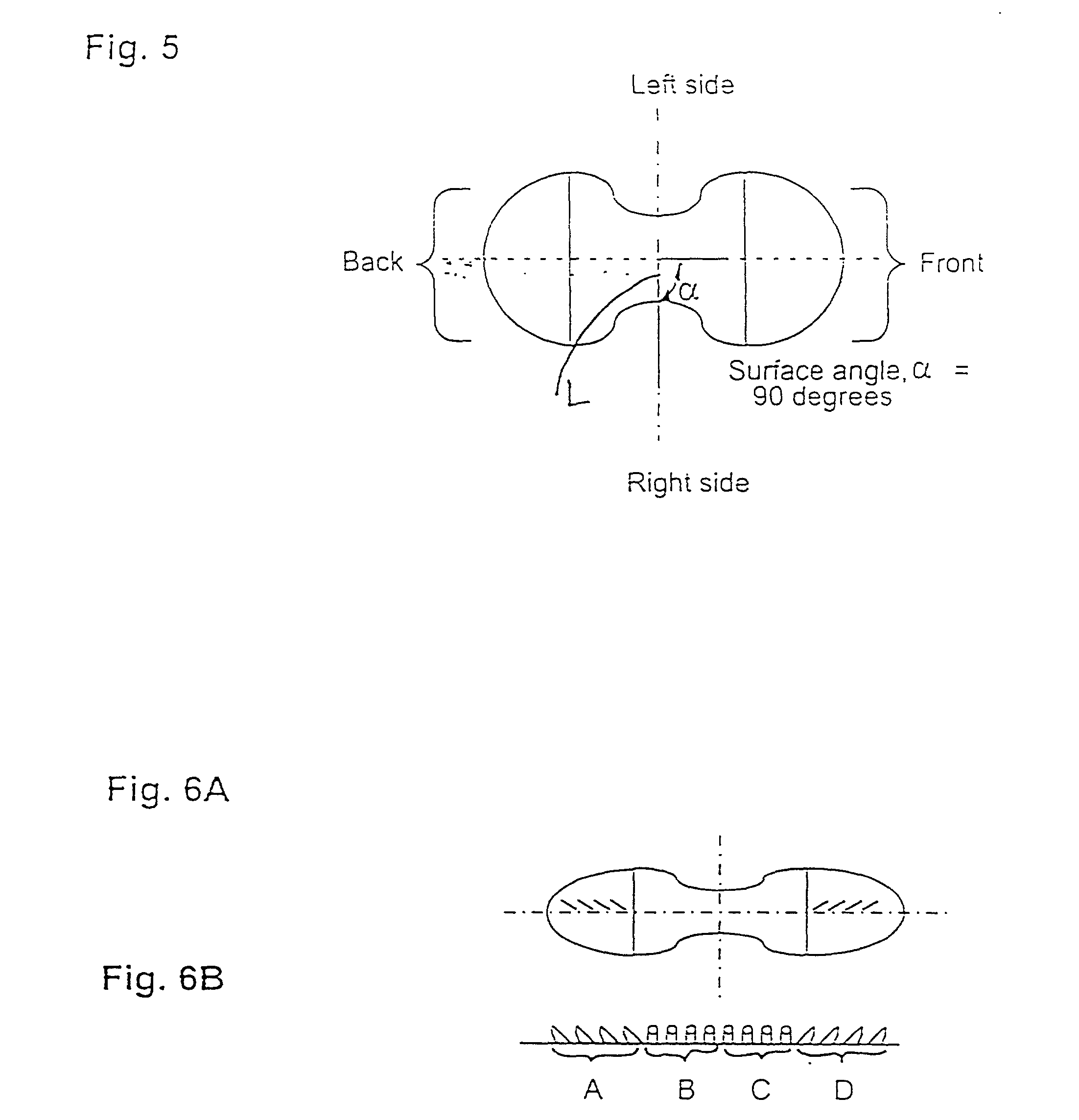Absorbent article with a response surface
a technology of absorbent articles and surface, applied in the field of absorbent articles, can solve the problems breathable backsheets, and liquid passage onto wearers' garments, and achieving the effect of reducing the breathability of the backsheet and protecting the wearer
- Summary
- Abstract
- Description
- Claims
- Application Information
AI Technical Summary
Benefits of technology
Problems solved by technology
Method used
Image
Examples
Embodiment Construction
[0055] In general, the topsheet should have good liquid acquisition and rewet prevention to maintain a dry surface and thereby keep the skin of the wearer dry; the absorbent core needs to provide enough absorbent capacity and allow the flow of vapor and / or air through it; and the backsheet should prevent liquid passage while being sufficiently breathable. Furthermore, the individual elements of the absorbent article (i.e. the topsheet, the optional distribution layer, the absorbent core and the backsheet) are joined, using any techniques known in the art so that the final article has the desired comfort and performance level.
[0056] Set forth below are definitions of some terms used herein.
[0057] The term "substantially" means that a given property or parameter (such as the surface angle) may vary by about 30% from the stated value.
[0058] As used herein, the term "areas immediately surrounding the region of maximum fluid discharge" means a surface area surrounding the region of maxim...
PUM
| Property | Measurement | Unit |
|---|---|---|
| Length | aaaaa | aaaaa |
| Water vapor permeability | aaaaa | aaaaa |
| Pressure | aaaaa | aaaaa |
Abstract
Description
Claims
Application Information
 Login to View More
Login to View More - R&D
- Intellectual Property
- Life Sciences
- Materials
- Tech Scout
- Unparalleled Data Quality
- Higher Quality Content
- 60% Fewer Hallucinations
Browse by: Latest US Patents, China's latest patents, Technical Efficacy Thesaurus, Application Domain, Technology Topic, Popular Technical Reports.
© 2025 PatSnap. All rights reserved.Legal|Privacy policy|Modern Slavery Act Transparency Statement|Sitemap|About US| Contact US: help@patsnap.com



